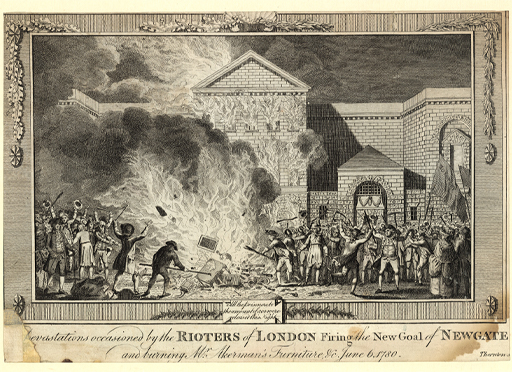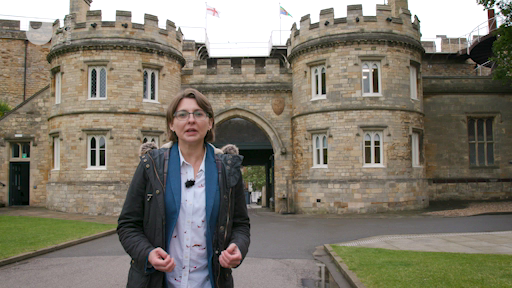Session 1: The origins of prison education
Introduction
The late 1700s to early 1800s was a time of significant social change in the four nations of the British Isles which created tensions and crises. Revolutionary ideas from America and France threatened the social hierarchy and encouraged an uprising in Ireland. There were struggles between workers and their employers, and disputes between slave owners and anti-slavery campaigners.
Between 1793 and 1815, Britain was almost continuously at war with France. Criminal statistics suggested that crime was increasing. A debate about the benefits of imprisoning criminals, rather than executing them, developed. Interest grew in building prisons where prisoners might learn remorse and self-improvement.

The first session of this course places the origins of prison education within the context of these major changes in society. The following sessions will explore how prison education evolved in the four nations during the 1800s.
Most of the evidence and examples in this course come from England, because that country has received the most attention from historians of prison education. However, schemes to educate prisoners could be found in all four nations of the British Isles – England, Scotland, Wales and Ireland (i.e. present-day Northern Ireland and the Republic of Ireland combined) – from the beginning of the 1800s. In 1801, the nations which comprised Great Britain (England, Wales and Scotland) were brought together with Ireland to form the United Kingdom of Great Britain and Ireland. Despite this, both Scotland and Ireland continued to have their own systems of criminal justice, including prisons.
Over the next eight sessions you will encounter examples of education in many different UK prisons, including gaols, bridewells, penitentiaries, local prisons and convict prisons. However, you will keep returning to one: Lincoln Castle Gaol. Now a prison museum, Lincoln Castle Gaol provides both a captivating backdrop and a fascinating case study for your exploration of the history of the prison and of prison education. In Sessions 1–7, Rosalind Crone, Senior Lecturer in History at The Open University and one of the authors of this course, will present a new chapter in the history of Lincoln Castle Gaol.
Watch the first video now, in which Rosalind Crone uses the history of Lincoln Castle Gaol to explain the birth of the modern prison and how it has been conceptualised by historians. If you can, write some brief notes about the ideas being presented. You will return to these later in the session.

Transcript
[GENTLE MUSIC]
Did you enjoy that introduction to the history of the prison? Was there anything that struck you as unusual, or which was unexpected? Perhaps you were intrigued to learn that historians interpret events or processes in different ways. Don’t worry if any of the ideas presented were difficult to grasp; you will revisit them in detail.
By the end of this session, you should:
- be able to outline the development of the prison from dungeon and lock-up to purpose-built penitentiary
- have a sense of the wider political and social events and ideas which framed the rise of the prison and prison education
- be aware of the types of sources historians use to gain a sense of what happened in the past.
The Open University would really appreciate a few minutes of your time to tell us about yourself and your expectations for the course before you begin, in our optional start-of-course survey [Tip: hold Ctrl and click a link to open it in a new tab. (Hide tip)] . Participation will be completely confidential and we will not pass on your details to others.
